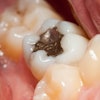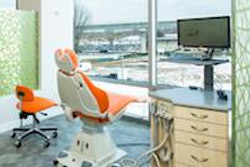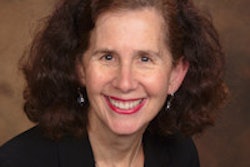
It is no surprise that many people dread going to the dentist. The dental chair combines a number of fears -- needles, pain, loud noises, confined spaces, and much more. I know, if given a chance to either endure a bad toothache or go to the dentist, most people will choose the toothache.
As a child, I dreaded visiting the dentist. Thus, today as a dentist myself, I ensure that my patients don't feel the same anxiety and fear that I once did. When I decided to become a dentist, I knew it would not be easy to make my patients' experiences pleasureable. My priority is to put them at ease. Here are a few steps that I have taken to create a better experience for my patients.
1. Make a courtesy call
 Joshua Perlman, DMD.
Joshua Perlman, DMD.I always make a courtesy call to my new patients the day before their appointment. This is not a publicity gimmick: This two-minute call allows me to introduce myself and interact with the patients before they set foot in my office. It is during this call that I try to become friends with them so that they don't feel anxious before their visit. This gesture has provided a lot of good acquaintances. Many patients have told me that this phone call was the moment they realized that my office differed from those of other dental experiences. The reassurance that comes from hearing a caring voice on the other end of the line helps me earn the trust of the patients. The call is brief, but it goes a long way.
2. Provide an office email address
I know that once any treatment begins, the patient is bound to have some questions or concerns. After the dental procedure most people are in a hurry to go home and relax. They often forget to ask the most critical question: "How do I care for my teeth after my treatment?" This is completely natural and, thus, I provide my office email address to all my patients after their procedure. They are always free to email me with dental-related questions.
3. Lend an ear to the patient
I believe that the best way to make patients feel comfortable is by simply listening to their problems. It is important to know the exact reason for a patient's visit. No matter what that may be, from a root canal to a cosmetic procedure, I ensure that each patient knows that my primary aim is to provide the best possible solution to their problem, as quickly as possible.
4. Make them feel important
Listening to patients' concerns helps guarantee a positive experience.
“Listening to patients' concerns helps guarantee a positive experience.”
It lets them know that their voice matters. This motivates them to schedule subsequent appointments, cuts down on no-shows, and keeps patients coming back for their periodic checkups and hygiene appointments. The more regularly a patient comes in for routine evaluations, the more likely we can keep them healthy and keep their costs down. I love when my patients give us rave reviews on services in the office, including noise-canceling headphones, neck pillows, reflexology, personalized treatment, and hygiene.
5. Rate dental anxieties
Do you offer your patients a dental visit stress test? At my office, you will be asked to fill out vital paperwork during your first visit. One of the forms is Corah's Dental Anxiety Scale questionnaire. This questionnaire puts a number score on their fears and anxieties. The questionnaire is related to their tolerance of the sound of the drill, the sight of the needle, or the smell of the office. If their anxiety score is high, we try to alleviate the fears.
6. Feedback is important
To achieve high patient satisfaction, I listen to the feedback of the patients regarding previous dental experiences, positive and negative. When new patients walk in my office, I always ask them about their previous dental examinations. I want to know if they have chosen our office on the basis of a reference or because they had a negative experience with another dentist. If they switched for the latter reason, I make a note of it and ensure that the same error or inconvenience is not repeated.
With these six simple tips and a smile on my face, I manage to calm the anxious patients that walk into my office.
Joshua Perlman, DMD, is a general practice associate in private dental practice in New York City at NYC Smile Spa. He previously served as chief resident at Lincoln Medical and Mental Health Center in the Bronx.
The comments and observations expressed herein do not necessarily reflect the opinions of DrBicuspid.com, nor should they be construed as an endorsement or admonishment of any particular idea, vendor, or organization.



















